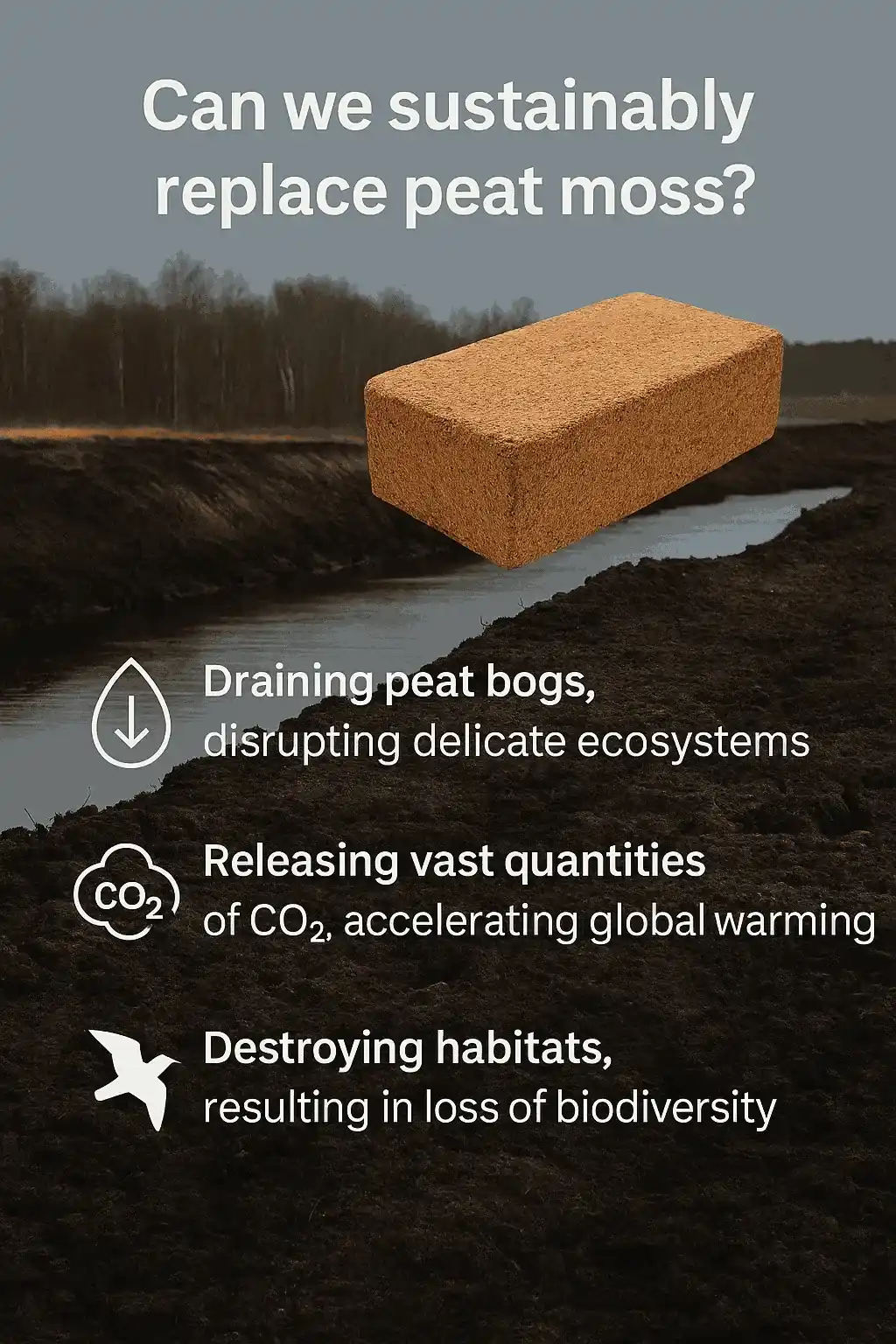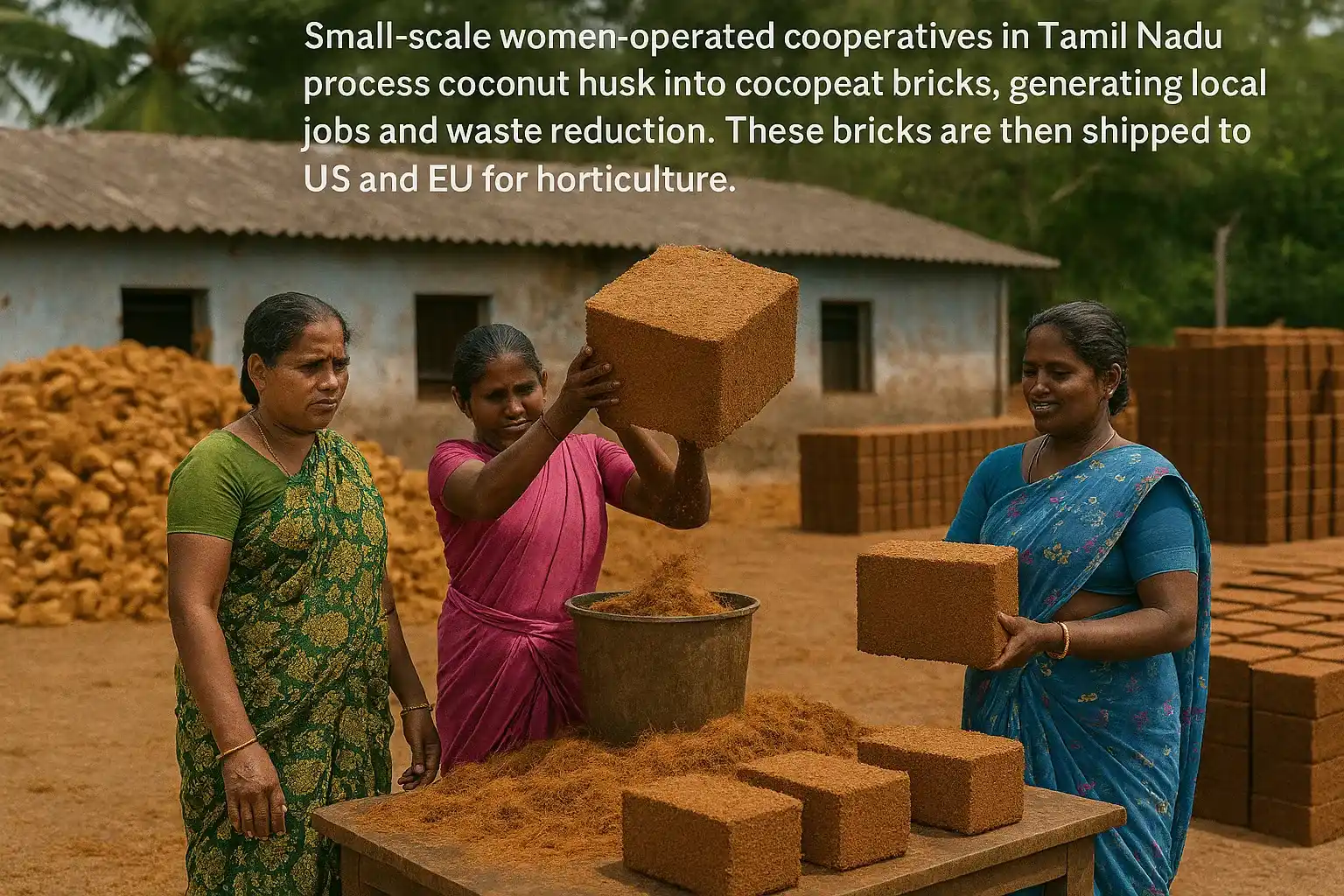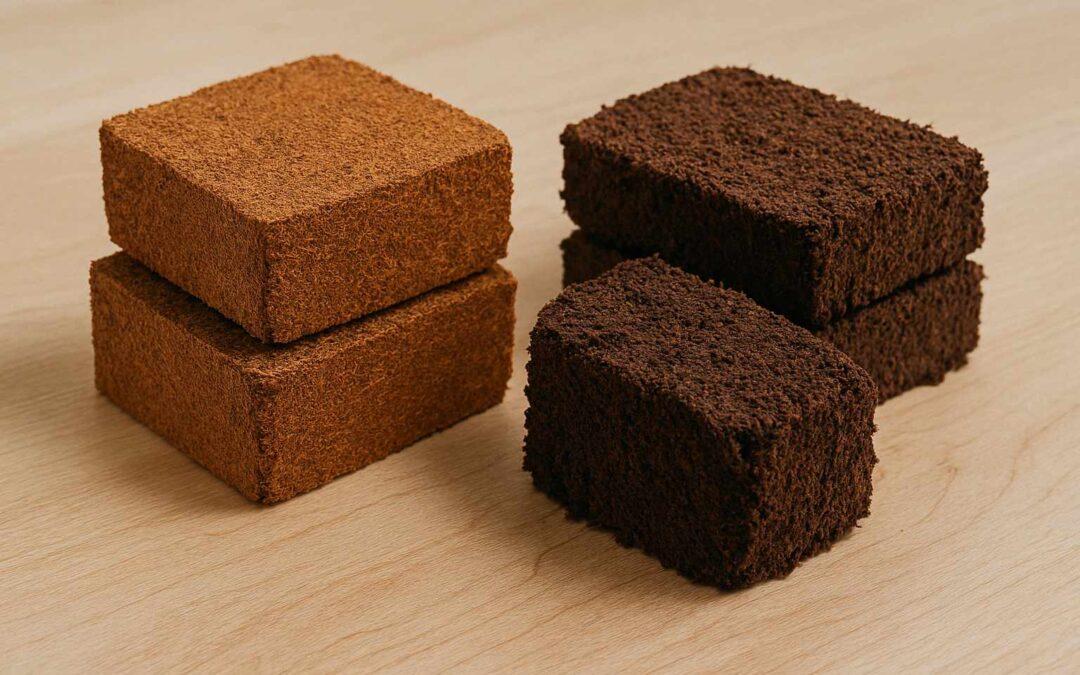Can Coconut Coir Bricks Replace Peat Moss
In the age of environmental awareness, the gardening and agriculture industry is facing a pivotal question: Can we sustainably replace peat moss? As concerns grow around carbon emissions, biodiversity loss, and non-renewable resource depletion, coconut coir bricks —produced by eco-conscious coconut coir bricks manufacturers— have emerged as a potential solution that may revolutionize soil management worldwide.
The UK has pledged to eliminate peat use in gardening by 2024 due to environmental degradation and carbon emissions.
Peat is hundreds to thousands of years in the making. So, once it’s lost—it’s effectively lost for good on human scales. That makes it non-renewable and unsustainable.

Why Coconut Coir Bricks are a Sustainable Option?
Coconut coir is also a natural by-product of the coconut industry. It is derived from the fibrous husk that lies between the hard inner shell and the hard outer coat of a coconut. Coir is later compressed into bricks for convenient handling, shipping, and storage.
Important Sustainability Benefits:
Waste Utilization: Utilizes a portion of the coconut that previously was discarded.
Renewable Resource: Coconuts are grown and harvested throughout the year.
Minimal Land Use: Cultivated without requiring specialized land for coir production.
India: Small-scale women-operated cooperatives in Tamil Nadu process coconut husk into cocopeat bricks, generating local jobs and waste reduction. These bricks are then shipped to the US and EU for horticulture.

What Is Peat Moss and Why Is It Under Scrutiny?
Peat moss is a spongy material formed over centuries in waterlogged environments called peat bogs, mostly found in Canada, Ireland, Russia, and parts of Northern Europe. These bogs act as carbon sinks, trapping carbon dioxide (CO₂) that would otherwise be released into the atmosphere, playing a crucial role in mitigating climate change.
However, harvesting peat moss involves
:
-
Draining Peat Bogs: This process lowers the water table, which disrupts delicate ecosystems and makes the peat accessible but also accelerates decomposition.
-
Releasing Stored Carbon: Once drained and exposed to air, the organic matter in peat begins to decompose, releasing significant amounts of CO₂ into the atmosphere.
-
Loss of Biodiversity: Peatlands are home to rare species like the swallowtail butterfly, bittern, and hen harrier. Habitat destruction leads to the decline of these species.
-
Irreversible Damage: Peat bogs regenerate extremely slowly — approximately 1 mm per year. This means that once a bog is harvested, it can take centuries to restore, making peat a non-renewable resource on human timescales.
Did You Know?
Damaged peatlands contribute to nearly 4% of the UK’s annual greenhouse gas emissions, despite covering just 12% of its land area.
Due to these environmental concerns, countries like the UK, Ireland, and parts of the EU have begun implementing bans or restrictions on the sale and extraction of peat for horticulture. This shift is accelerating interest in sustainable alternatives like coconut coir.

Coconut Coir vs. Peat Moss: Detailed Comparison
|
Feature |
Coconut Coir |
Peat Moss |
|
Source |
Byproduct of coconut husks |
Decomposed sphagnum moss from peat bogs |
|
Renewability |
Highly renewable; coconuts harvested every 2 months |
Non-renewable; peat formation takes centuries |
|
Water Retention |
Absorbs 8–30 times its weight in water |
Holds 10–20 times its dry weight in water |
|
Re-wettability |
Easily re-wets when dry |
Becomes hydrophobic; difficult to re-wet once dry |
|
Aeration |
Excellent; improves soil porosity |
Good; may compact over time |
|
pH Level |
Near-neutral (5.8–6.8) |
Acidic (3.5–4.5) |
|
Cation Exchange Capacity (CEC) |
Moderate (40–60 meq/100g) |
High (100–200 meq/100g) |
|
Nutrient Content |
High in potassium and phosphorus; low in nitrogen, calcium, and magnesium |
Low in nutrients; often requires supplementation |
|
Environmental Impact |
Eco-friendly; utilizes agricultural waste |
Harvesting disrupts ecosystems; releases stored carbon |
|
Salinity |
May have high salt content; requires proper washing |
Generally low salinity |
|
Microbial Activity |
Lacks inherent beneficial microbes; may require inoculation |
Contains beneficial microorganisms naturally |
|
Cost and Availability |
Generally affordable; availability varies by region |
Widely available; prices may increase due to environmental regulations |
|
Usage Considerations |
Ideal for hydroponics, seed starting, and container gardening |
Suitable for acid-loving plants; may require pH adjustment for others |
Environmental and Practical Insights
- Sustainability: Coconut coir is a byproduct of the coconut industry, making it a sustainable choice. In contrast, peat moss harvesting contributes to the degradation of peat bogs, which are vital carbon sinks and biodiversity hotspots.
- Performance in Cultivation: Studies have shown that coconut coir can support plant growth effectively. For instance, tomato plants grown in coconut coir exhibited increased fruit yield and nutrient uptake compared to those grown in peat-based substrates .
Handling and Preparation: Coconut coir requires proper preparation, including washing to remove excess salts and buffering to balance nutrient content. Peat moss, while easier to use directly, may require pH adjustment depending on the plant species.
Recommendation: For environmentally conscious gardening and sustainable agriculture, coconut coir is a preferable alternative to peat moss, provided it is properly processed and prepared for use.
Gardening Insight:
A California home gardener swapped peat moss for coir in raised beds. The payoff? Improved drainage, simpler care, and no mold or fungal growth problems, which are usually linked to soggy peat.
Challenges with Coconut Coir
Coir is eco-friendly and easy to use, yet it’s not flawless. Below are some of the most prevalent challenges:
- Salt Content
Coir can have high sodium and potassium levels, particularly when from coastal areas. If not washed or buffered, it can harm delicate plants.
✅ Best Practice: Use washed and buffered coir bricks, usually marked as “low EC” (Electrical Conductivity), to preclude harmful use.
- Carbon Footprint due to Transportation
Because most coconut coir is manufactured in India, Sri Lanka, Indonesia, and the Philippines, international shipping contributes to its carbon footprint.
Mitigation Strategy: Promote local processing in export nations and bulk transport to decrease per-unit emissions.
Commercial Grower Success
GreenFields Hydroponics, a commercial grow operation in the Netherlands, made a full transition away from peat to coconut coir for lettuce and basil production. After trying it out across one growing season:
Water use fell by 20%
Yield of the crop increased by 15%
Customer demand for “peat-free” product increased
The company now markets its products as 100% sustainable and peat-free, attracting environmentally conscious buyers.
Final Thoughts: Can Coir Truly Replace Peat Moss?
Coconut coir bricks can replace peat moss in most gardening and horticultural applications—if processed and sourced responsibly. While some technical challenges exist (like salt levels and transport emissions), they are manageable with proper treatment and supply chain innovation.
As climate change accelerates, switching from peat to coir could:
Minimize environmental harm
Empower coconut-farming communities
Encourage circular economies and green employment
Are you ready to break free from peat?
Give Greglo’s premium cocopeat bricks a try for your greenhouse or garden. Hobbyist or bulk importer, let’s collaborate towards a greener future.

